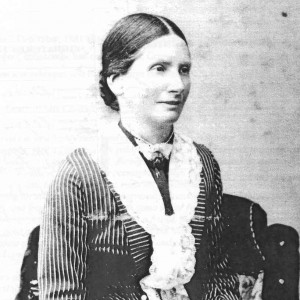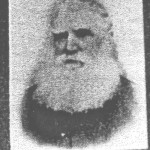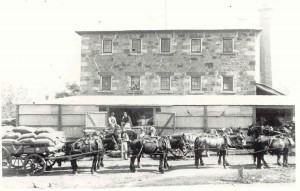THE MILL AT COWRA
Bathurst Free Press
“From our Cowra Correspondent.”
16 February, 1861.
Our Mill has made such progress within the last ten days, that Mr Walsh[1] has commenced the purchase of wheat; the highest market prices are being given for best samples. It is expected that “steam will be up” next week; numbers of our neighbouring farmers are holding back their wheat till the Cowra Mill starts to grind. The wheat season has been so favourable here this year, that probably 50,000 to 60,000 bushels have been grown within 20 miles of Cowra, all of which will come this way. The nature of this undertaking is now beginning to show itself; the engine is a superior specimen of workmanship and in the finishings no expense seem to have been spared. The connections have all been effected with the boiler: steam, water, and escape pipes fixed and ready for the grand event of next week.. I will endeavour to send you an account of the proceedings about the opening and should I be rather long winded you must excuse me as my steam will likely be up too.
Postscript: Thursday afternoon 4 p.m.
Four o’clock the Mill has just opened – all the news by the next post – a large muster of the neighbours.
The ball is expected to be first rate; lots of fine young ladies. Town quite gay.
20 February, 1861.
Wednesday, 12th February, 1861, will long be remembered at Cowra as the dawn of a new era of social advancement. That day will be remembered at Cowra as the day in which our new Steam Mill was set agoing. It started, I may say, in the presence of the whole available force of the town and district.[2] Early in the morning it was evident that a large muster might be expected, as hour after hour brought its quota of honest men and bonny lassies to take a part in the expected festivities. Another feature in the day’s proceedings was the trial and condemnation of two of the leading rioters, a report of whose examination I sent you by that night’s post.[3] Four o’clock was given out as the hour when the mill was to be started. As the time approached, many well dressed ladies and others thronged the mill. To gaze upon the (to many of them) stupendous machinery, and nothing could surpass the urbane and gentlemanly civility all experienced at Mr Crighton’s[4] hands. In order to acquire some knowledge of steam and its properties, I would suggest to the young men of Cowra to request Mr Crighton to deliver a Lecture on the subject before he leaves Cowra. But to resume –
All arrangements for starting having been completed, about half past four the steam whistle sounded the alarm, and a general rush took place to the spot. Another alarm having sounded, the company stationed themselves in the engine room and the ground floor of the mill. Mrs Neville[5], the excellent sister of the proprietors (Messrs Walsh) then advanced to her allotted station, (as sponsor) carrying the Champagne in her hand, supported on the left by the engineer, on the right by the Architect and Contractor of the building, and followed closely by Mr John Loudon (himself an old engineer)and who had been appointed to give the signal to start. All ready, the word was given and slowly and steadily the huge flywheel began to move, whiz went the other parts and the Engine was in motion. Mrs Neville then struck the laying shaft in connection with the engine’s crank, with the bottle (smashing not the shaft but the bottle, naming at the same time her stalwart child “The Cowra Steam Mill”, round went the cogs, crash went the two pair of stones, steam is up, and the Engine on her speed. Then cheer upon cheer arose, the company joining in the joyous congratulations.
The engine did its work beautifully, not a jar or quiver was perceptible, smoothly and silently it performed its allotted task, and the whole operation of grinding was done with a clockwork regularity, beautiful to behold. The engine was kept at full speed for some time, and all went merry as the marriage ball, some jovial gentleman singing out:
“Oh, merry maid be that marries the miller,
For fine and fair day he is aye bringing till her”
Steam was then eased off, and the company adjourned to partake of a substantial luncheon provided by the proprietors.
Amongst the company assembled we observed the Rev. B Murphy,[6]
George Campbell Esq., J.P.,[7] N. Connolly Esq.,[8] A. Lynch Esq, J.P.,[9] one of the oldest and respected patriarchs of our district, E. Markham, Esq., [10]and the residents in the town and district, together with a numerous assemblage of ladies; but more of them bye and bye. The gentlemen were summoned to the lunch tables, and for a time mirth and jollity prevailed. N. Connolly, Esq., then called for a bumper[11], and in proposing the healths of the spirited proprietors of The Cowra Steam Mill, dwelt at considerable length and much force on the advantages likely to accrue to the town and district of Cowra from that day’s proceedings, and characterising the undertaking as one of the highest spirit and enterprising, concluded by wishing every speed to the Cowra steam mill, and trusted that it not only would prove beneficial to the district, but remunerative to the proprietors; a sentiment in which he was sure he was heartily joined by all present.
Mr Thomas Walsh thanked the company for their good wishes towards the success of the mill, and expressed himself as highly gratified by the large muster now met to do his brother and himself so much honour, and he trusted that now they had met they would enjoy themselves, and concluded his very modest reply by inviting them (particularly the ladies) to the ball in the evening.
Mr Lynch then proposed the health of the architect (Mr Gell), the contractor (Mr McEwan), and the engineer (Mr Crighton), dwelling with his usual force and facetiousness, on the merits and magnitude of the undertaking in which these three gentlemen had been engaged; his idea of the matter was that it was first class A1 in fact. Mr Gell made a gentlemanly and appropriate reply, followed by Mr Crighton for self, and Mr McEwan thanking those present for the personal kindness they had shown him, a stranger amongst them, and trusting that all present would lose no time in sending their grist to the Cowra steam mill, so as to enable the proprietors to keep up the steam.
Mr R N McDiarmid[12] then called for bumpers, and in proposing the health of Mrs Neville congratulated that lady and the company upon the stalwart child they had that day seen ushered into existence; he pronounced the Cowra Steam Mill as second to none out of Sydney, and passed a well merited compliment upon the proprietors and workmen employed in the erection.
Mr Patrick Walsh returned thanks for his sisters briefly and with much sense and feeling.
The health of the clergy was then proposed by Mr Gell. To which Fr Murphy responded in a speech of considerable length and Christian spirit, expressing his pleasure at being present at the opening of the mill, which he hoped would prove a blessing to the inhabitants of the district. His reverence passed a high elogium on the unanimity that he had always seen take place at Cowra on any public occasion, and trusted they would always remain on the same friendly footing. The reverend gentleman’s address was listened to throughout with earnest attention.
Mr Patrick Walsh then proposed the health of Messrs Chapman Brothers of Sydney, the manufacturers of the machinery of the Cowra Mill. This was responded to by Mr Crighton as their representative here, who remarked that he was much obliged by the warm manner in which the names of his employers had been received, and assured the assemblage that he would duly convey to Messrs Chapman the gratifying tribute they had born them. He (Mr C) was also happy to assure the meeting that Messrs Chapman were ready to supply them with machinery of any kind and description, and of materials, warranted to work, and be of good workmanship. He concluded his remarks by trusting that the Cowra Steam Mill would prove a benefit to the district, and show to the people of the Lachlan and Cowra district, the material of which Chapman brothers compose their workmanship.
The oratory over, the real and substantial business of the lunch went on with a steadiness equalled only by the engine itself, after which the company dispersed, highly gratified with the day’s proceedings. The gentlemen then took to the rigging, the ladies to the busking, and for some hours the mysterious and sacred operation of the toilet , went on in preparation for
THE BALL
This brilliant affair came off on the third floor of the mill, which was tastefully decorated with flowers and evergreens, the production of the younger members of Mrs Neville’s family,[13] and did much credit to their skill and taste. At nine o’clock, the company began to assemble, and having received a highly flattering invitation from the host and hostess, in the evening at half past nine, we donned our kits and proceeded to the ballroom, on entering which the Coup d’veil was to a nervous man like your correspondent quite overpowering. A perfect cataract of loveliness met upon my view, having somewhat recovered my scattered senses, (which the sudden scene which had all but sent to the right about), I ventured to look around me and making a most extraordinary attempt at my best bow, advanced into the room and found I stood in the presence of the elite of the district, amongst whom I recognised the lady of our respected local member and Miss Watt, Mrs McDiarmid, Misses M and A Pettigrin,[14] Miss Jane Rose, and Miss Emily Flanagan, Miss Kirkpatrick, Miss Malley, Miss Ousby, the Misses Clark of Cowra, Miss Clark, and Miss Moore of Carcoar, Mrs and Miss Markham[15], Miss Robinson, Mrs Crighton, Mrs Ousby, and fifty others that I could name would space allow. Amongst the gentlemen I observed N. Connolly Esq., J.P., A. Lynch, Esq., J.P., Mr Markham, Mr McDiarmid, Mr T R Watt, Mr J West (younger of Cudgelong)[16] and Mr N E and W Watt,[17]
Mr J. and J. Ousby,[18] Messrs Walsh, McEwan and Crighton and scores of others seemingly intent to make a night of it.
A little before ten o’clock dancing commenced, in the first set a magnificent quadrille of 40 members; the music struck up, and at it we went with a will. This splendidly arranged dance occupied the whole extent of the Mill floor, 21 feet by 43, the ladies engaged were some of the loveliest of that lovely assemblage; the favoured gentlemen some of the most determined and spirited dancers in the district. We were fortunate beyond our deserts in the choice and engagement of our partners, and what with the strains of the music, the rush of nimble feet, the rustle of the splendid dresses, the bows and the wreathed smiles of our merry partners, we enjoyed more than I can describe. “There was a sound of revelry that night, for Cowra’s capital had gathered there her beauty and her chivalry.” The first set over, the business of the evening went on with increasing vigour and dance succeeded dance. The happy party did not break up until (to use the usual style) Sol gave the signal to retire. No accident occurred nor did any unseemly disturbance mar the festive day, and thus ended the 12th of February, 1861, at Cowra.
[NOTE: Footnotes are not intended to be comprehensive. They are developed from references including “From Castle Erkin to Cowra – The story of the Walsh Family” by Margaret Wilkinson, 1979 Revised 2003; details assembled from various Government archival sources; “Pioneers Family Roots – Cowra” 1986; and “Cowra on the Lachlan”, 1988, Joan Marriott. The document is part of the continuing development of the Markham and Walsh family histories. (Frank Murray, Canberra 6281 7660.)]
- The Mill was built by Patrick Walsh, (1817-1892), Grazier, of ‘Kikiamah’ near Grenfell, and his brother Thomas (1820-1899), Publican, of Cowra. They, with their brother William, and sisters Mary, Margaret and Bridget, had migrated to New South Wales from Caherconlish and Castle Erkin in County Limerick, on the “St Vincent’ in 1844, moving initially to Yass to join their McNamara uncles and families, who had arrived on the ‘Livingstone’ in 1841. Two other sisters, Catherine (Hartigan) and her family, and Ellen, arrived later on the ‘Lord Stanley’ in 1852. Other Co. Limerick cousins (Curry, Dea, Walsh) were also on the ships.↵
- The 1861 Census records that the population of the village was 117 males, 76 females and a police force of seven. These figures do not include those in the Cowra district outside the village. The land on which the Mill was built was purchased from local farmer Richard Duggan for £110 in Vaux Street, alongside a similar block owned by Edmund Markham, father-in-law of the Walshs’ youngest sister Ellen.↵
- There had been substantial unrest in the town over the previous week, when townspeople had found it necessary to deal with many unruly travellers stopping over in the village on their way to the Lambing Flats diggings.↵
- Mr Crighton was the Engineer in charge of installing the plant in the newly completed building.↵
- Mrs Neville was Bridget Walsh (1823-1881), sister of the Walsh brothers. Born in Co. Limerick in 1823, she arrived with her brothers on the ‘St Vincent’ in 1844. She married Edward Neville at Binalong in 1845. In 1851 she managed the Old Royal Hotel (known as The Green House) one of the first Inns in Cowra. Neville died in 1863 and she married Nicholas Challacombe in 1867, after which they built Ilfracombe House in Kendal Street.↵
- Father Bernard Murphy was based in Carcoar for ten years from 1853 and became widely known as “the Parish Priest of the Lachlan” as a result of his extensive travel in the district.↵
- George Campbell, (1827 -1890) purchased ‘Mufflon Park’,the land adjacent to Cowra, originally granted to the Rev. Henry Fulton and occupied by his son Henry Matthias Fulton.. Campbell renamed it‘Jerula’. He was an original buyer of land in Cowra itself in the 1850s. He entered NSW Parliament in 1881 and was Mayor of Cowra in 1888.↵
- N Connolly of ‘Werigal’ near Carcoar, and host of Archbishop Bede Polding on his travels to the area. He was also an original buyer of land in Cowra in the 1850s.↵
- Andrew Lynch arrived in NSW as a bounty immigrant on the’Moffat’ in 1841, worked on John Grant’s ‘Merriganowry’, and at Holmwood, and later owned and leased land at and around Sheet of Bark and Woodstock. He was later Member for Carcoar in the NSW Parliament. He was also an original buyer of land in Cowra in the 1850s.↵
- Edmund Markham (1802-1866), born near Rathkeale, Co. Limerick, arrived in NSW in 1822 on the ‘Mangles’ having been sentenced, along with many others, to 7 years under the Irish Insurrection Act. After serving his time as overseer on John McHenry’s property at Evan (now Penrith), he moved to Milburn Creek on the Lachlan in the early 1830s, bringing up his family and farming there on 3000 plus acres until his death in 1866. He and his wife were the witnesses at the marriage of a Walsh sister, Margaret, (1826-1885) to Thomas O’Shaughnessy in 1856. Edmund’s first child and only son, James, (b. Milburn Creek 1836), married the youngest Walsh sister, Ellen (1835-1916) in 1858. He purchased three one acre blocks in Cowra in the 1850s, including the block on which the Cowra Guardian building is built.↵
- ‘Full glasses’.↵
- Neil McDiarmid,(1806-1870) arrived in Cowra in 1841. He leased ‘Waugoola’ for much of the 1840s. He was the brother-in-law of William Redfern Watt. He was instrumental in convincing the Government to survey the site for Cowra. He was among those who purchased land in the first sales, in 1854.↵
- Bridget (Walsh) Neville’s children were Daniel (16), Mary (14), Patrick (10) and Sarah (9).↵
- It is likely these are the Misses Pettigrew, neices of William Redfern Watt.↵
- Edmund Markham’s wife was Bridget Slattery (1820-1898) from Monagea, near Newcastle, Co Limerick. She had arrived with her mother and sisters on the “Surrey” in 1833 and married Edmund Markham in St Mary’s Cathedral in Sydney in 1838. The daughter referred to here was either Ellen Agnes (1840-1919) who married Frederick Joseph O’Leary in 1862, or Mary (1853-1933) who married his brother Patrick Joseph O’Leary in 1873. The oldest daughter, Catherine Mary (1838-1872, had been married to John Nowlan of Bimbi only three days earlier by Fr Murphy at ‘Spring Vale’ her family home on Milburn Creek. Witnesses were Thomas Walsh, and Mary Watt wife of William Redfern Watt, local Member of Parliament.↵
- Joseph West, son of the late Thomas West, with his family arrived along the Lachlan in the 1840s. They had extensive land holdings. Joseph “the younger’ had James Park, given to him by his father.↵
- William Watt, living at Waugoola, managed his uncle’s substantial holdings from 1836 and then lived at Bumbaldry after purchasing it in 1839. W Redfern Watt was the nephew Dr Redfern Watt, Emancipist, and surgeon and friend to Gov. Lachlan Macquarie, who was associated with the Lachlan Valley from 1827. ↵
- James and Joseph Ousby leased ‘Mulyan’ and ‘Waugoola’. The Ousby family were pastoralists from the 1840s and purchased a number of town blocks in the original 1850s sales.↵



